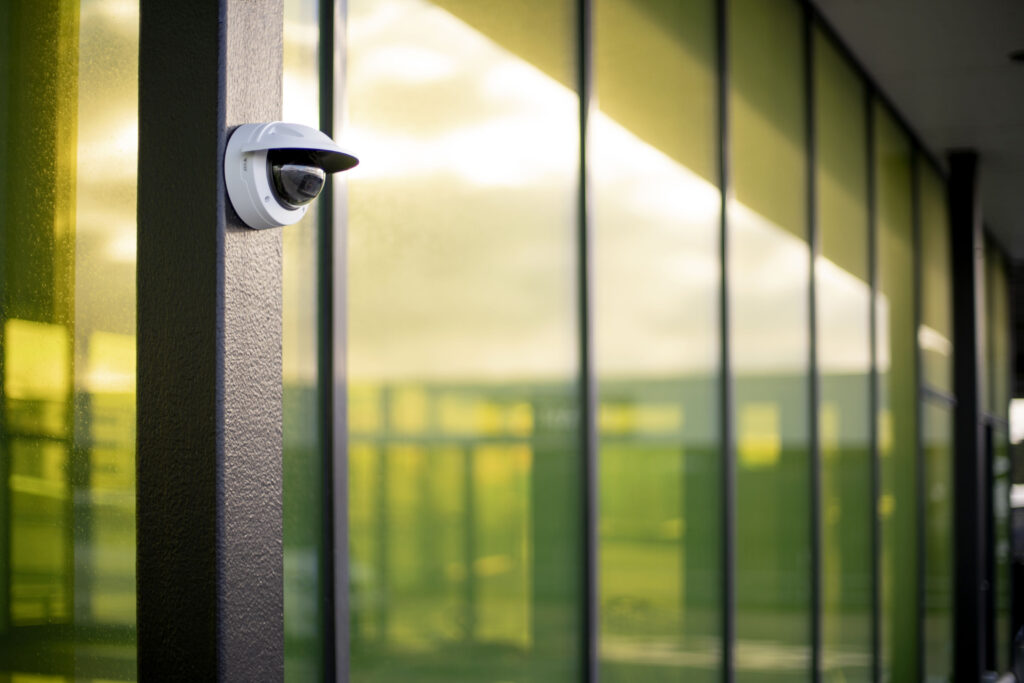
Features
Structures & Equipment
Leveraging video surveillance technology to boost commercial greenhouse operational efficiency
November 7, 2023 By Joe Morgan, Axis Communications
 Courtesy of Axis Communications.
Courtesy of Axis Communications. In the high-tech world of commercial greenhouse farming, finding ways to optimize for maximum yield, or ‘operational efficiency,’ is paramount. Every second of downtime, every unforeseen issue that halts production, can have significant financial implications. Beyond its conventional use in ensuring security, video surveillance technology has demonstrated its power to enhance operational efficiency. Integrated video surveillance solutions can offer a host of benefits, including minimized downtime, enhanced situational awareness, and predictive maintenance capabilities. Network cameras add an additional layer of transparency, helping greenhouse businesses understand the intricacies of their operations.
High-quality cameras are essential for secure, effective monitoring in potentially challenging conditions that may be present in a commercial greenhouse, including high humidity and variable temperatures. However, more than merely possessing high-quality cameras are required; the key lies in their strategic deployment. Integrating these surveillance solutions within the organization’s greenhouse management system to varying extents can allow businesses to unlock different levels of functionality and, in turn, different degrees of improved operational efficiency. This article explores a three-tier approach to maximizing operational efficiency with video surveillance in the context of commercial greenhouses.
Tier One: Enabling Visual Verification
The first level of video surveillance technology’s use in a commercial greenhouse context is visual verification. Network cameras provide real-time live views of different areas of the greenhouse’s operations. For instance, they can allow operators to monitor plant growth stages, pest activity, and the functioning of critical equipment such as irrigation and climate control systems.
In large greenhouses that employ vertical farming techniques, network cameras can provide visual verification of plant health on different levels of the structure. This allows for real-time monitoring without needing constant physical inspection, enhancing operational efficiency and ultimately contributing to improved crop yield and quality.
Tier Two: Enhancing Real-Time Support for Operators
The second level of functionality involves integrating network cameras into existing greenhouse management systems or cloud services. This level focuses on providing real-time support to operators. When an anomaly such as a sudden temperature drop, a humidity increase, or equipment failure is detected, integrated cameras can be automatically directed to capture the area of interest.
For example, in an automated watering system, if a leak occurs or a nozzle becomes blocked, an alert triggers the camera to automatically focus on the problem area. This immediate visual insight is invaluable in diagnosing issues quickly, minimizing disruptions, and potential damage to the crop.
The integration of cameras with existing greenhouse management systems and their associated sensors creates an advanced data-driven sensory network. Network cameras add visual input to the data from traditional sensors, offering a more comprehensive view of greenhouse operations. The fusion of visual and sensor data gives operators a detailed overview of the situation, enhancing their ability to make informed decisions and take swift action.
Tier Three: Harnessing the Power of Analytics
The third level of functionality introduces intelligent analytics into the mix, enabling a transformative use of cameras in commercial greenhouses. At this level, intelligent analytics converts video, audio, and other data are converted into actionable insights. These insights help optimize performance in real-time, respond immediately to operational changes, prevent unnecessary downtime, and ensure safer operations.
Intelligent analytics allow operators to monitor specific conditions, such as plant growth rates or pest activities and alert them to potential issues. For example, operators can receive alerts if a disease outbreak is detected, or if specific environmental parameters like temperature, humidity, or CO2 levels exceed or fall below the desired thresholds. These real-time alerts can help prevent crop losses and operational interruptions, thereby improving operational efficiency.
Furthermore, analytics can monitor critical parameters such as the functioning of heating, ventilation, and air conditioning (HVAC) systems, as well as automated irrigation systems. If these parameters exceed or fall below certain thresholds, operators are quickly informed so they can inspect the situation and take corrective action. This proactive approach to monitoring ensures that disruptions are dealt with promptly, enhancing operational efficiency and safety.
Greater Functionality Enables Greater Proactivity
Each of these three tiers of functionality offers unique benefits to commercial greenhouses. Visual verification allows for process inspections and remote staff monitoring, ensuring safe working practices are adhered to, and resources are effectively utilized. With the integration of real-time alerts, operators can proactively respond to changes in operational conditions, focusing their attention where it is most needed, minimizing time wasted on non-critical tasks.
The inclusion of intelligent analytics in video surveillance solutions takes operational efficiency to a higher level. Analytics enable predictive maintenance, ensuring the continuous functioning of operations and allowing for data collection. Analyzing these data can help identify patterns and trends, providing insights to maintain high productivity levels and optimize crop yield.
Conclusion
To summarize, the degree to which video surveillance solutions are integrated directly influences how proactive and resource-effective a greenhouse business can be. As we move from basic visual verification to integrated real-time support and finally to intelligent analytics, the benefits of video surveillance technology for operational efficiency in commercial greenhouses become increasingly apparent.
Greenhouses looking to enhance their efficiency should consider their current use of video surveillance and strive towards achieving higher levels of integration. As these businesses become more resource-effective and efficient in the short and long term, the role of video surveillance as a crucial tool in greenhouse management is undeniable. Commercial greenhouses can transform their operations by integrating more advanced surveillance solutions, resulting in significant productivity improvements and cost savings.
Joe Morgan is the Business Development Manager for Critical Infrastructure with Axis Communications. He has more than 32 years of experience building market share in the critical infrastructure industry, and focuses on thermal imaging for petrochemical and oil and gas markets.
Print this page